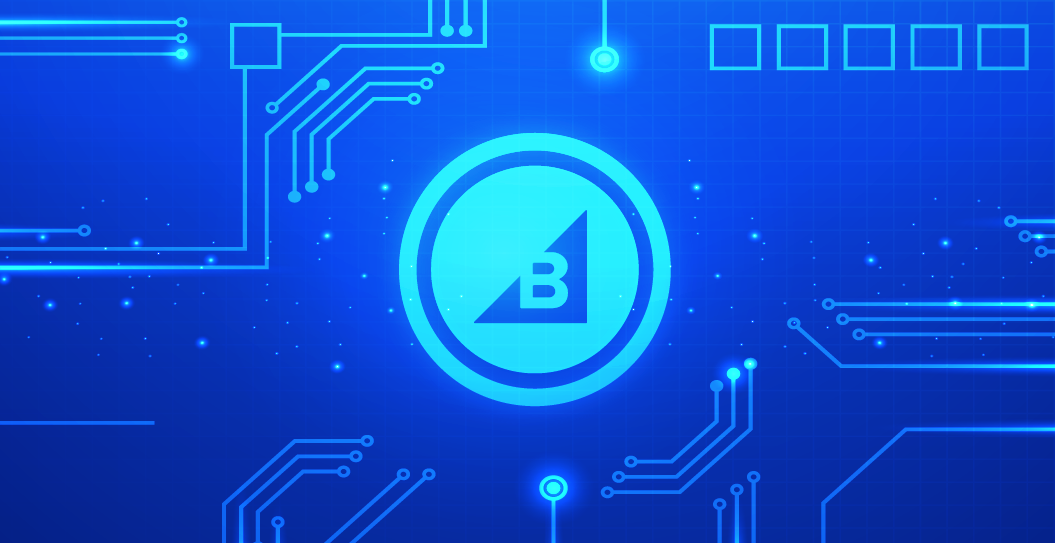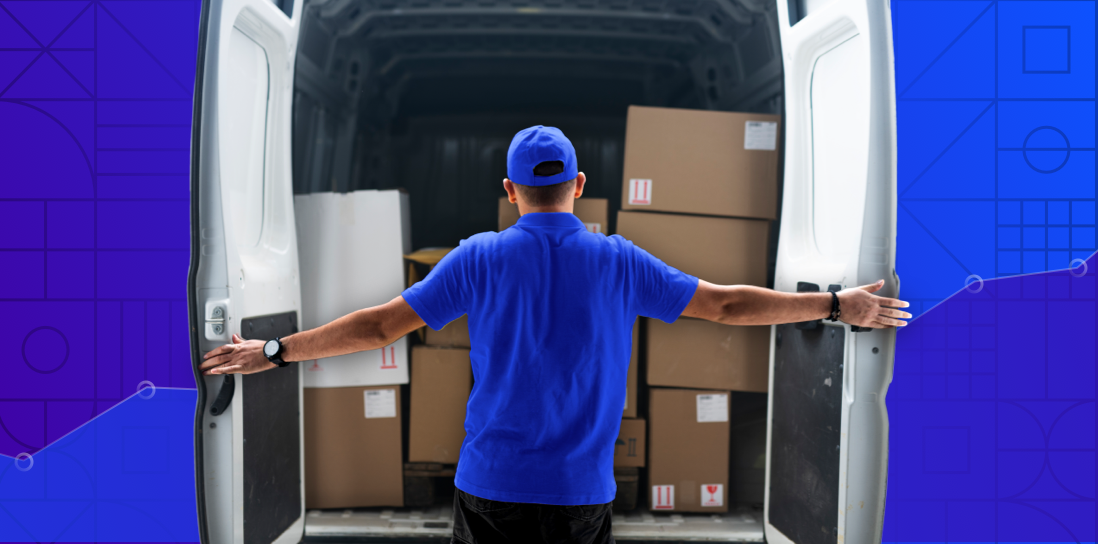- Enterprise
- Essentials
Top 7 B2B Ecommerce Trends to Transform Your Business

As the business-to-business (B2B) industry continues to evolve, ecommerce has emerged as more than a nice to have — it’s a must-have. The last few years of explosive ecommerce growth have intensified the need for B2B businesses to shift their focus online.
Unsurprisingly, Digital Commerce 360 reports that 42% of distributors say creating a more sophisticated website to better meet customers' needs is their biggest challenge for the coming year.
To help you stay up to date, we’ve narrowed it down and pulled together the latest B2B ecommerce trends that we think will have the biggest impact on your business.
B2B Ecommerce Statistics
B2B ecommerce is here. According to Digital Commerce 360, in 2021, online sales on B2B ecommerce sites, log-in portals and marketplaces increased 17.8% to $1.63 trillion. Statista data suggests that the North American B2B ecommerce market will surpass $4,600 billion by 2025.
It’s clear ecommerce itself is no longer a trendy new channel that B2B companies are exploring. Instead, McKinsey & Company reports that about 65% of B2B companies across industries are fully transacting online in 2022. And for the first time, B2Bs are more likely to offer ecommerce over in-person sales.
Why? Because ecommerce drives revenue. The same study from Mckinsey & Company shows that about 18% of B2Bs’ revenue is coming directly from ecommerce. Higher than phone, email and video conferencing.
This correlates with data shared from Wonderman Thomson on the buyer side, which revealed that as of 2021, 49% of B2B buying across the UK, US and China occurs online.
Still, to succeed with B2B ecommerce, it’s no longer acceptable to have a basic website or subpar customer experience.
Yet, 52% of B2B buyers report that they’re frustrated with the online buying experience. And even more detrimental, a staggering 90% of B2B buyers would turn to a competitor if a supplier’s digital channel couldn’t keep up with their needs.
To deliver the shopping experiences buyers have come to expect, B2Bs must prioritize their digital transformation in 2023.
Free B2B Masterclass
Want to grow B2B online sales faster? Start now by enrolling in our free B2B Masterclass.
Get StartedTop B2B Ecommerce Trends for 2023
B2Bs have their work cut out for them this year. We've listed the top B2B ecommerce trends to master in order to see success with this business model.
- Leave behind legacy systems.
- Invest in ecommerce platform technology.
- Personalize the online shopping experience.
- Prioritize product discovery and information.
- Sell across third-party online marketplaces.
- Explore social media platforms.
- Fulfill orders even faster.
Leave behind legacy systems.
Upgrading legacy systems will be a significant challenge in 2022 for 36.6% of distributors. But if you’re looking to deliver a better, more B2C-like experience for your new and existing customers, you’ll need to ensure you have the right systems in place.
Unfortunately, many businesses make the mistake of only upgrading their systems on an as-needed basis. Which down the line can make it more difficult to integrate technologies and put you right back where you started.
Instead, develop a digital transformation strategy that’s guided by your overall business goals and vision — not just your technology needs.
Watch as Salsify’s Head of Product Partnerships Ken Cowan offers advice for how to get started with your digital transformation strategy:
Invest in ecommerce platform technology.
If you’re mapping out your digital transformation, a great place to start is with your B2B ecommerce platform because it can serve as the center of your digital ecosystem. And in fact, investing in ecommerce platform technology is top priority for 35% of US B2B businesses.
But not all ecommerce platforms are the same. Many still operate as a monolith, or one-size-fits-all solution, meaning you don’t have the flexibility to choose the best solution for your needs.
On the other side of the spectrum, you’ll find platforms that don’t truly support B2B ecommerce functionality. Instead, they might offer a few features or workarounds.
With modern SaaS ecommerce solutions, like BigCommerce, you can get all the benefits that come with SaaS — robust security, speed to innovate and lower total cost of ownership — as well as features that support the complexities of B2B.
Another key consideration is the ability to easily integrate with your other business systems. For instance, watch as Toolsaver’s Ecommerce Manager Neil Bruce explains how they use BigCommerce’s Promotions API to connect with their proprietary tool to offer exclusive deals to their B2B customers:
Personalize the online shopping experience.
Research has found that 50% of B2B buyers identified improved personalization as a key feature when searching for online suppliers with whom to build relationships, with consumers spending 48% more when their experience is personalized.
BigCommerce merchant TYGRIS and their digital agency used a headless solution to implement personalized experiences for their customers.
“We used BigCommerce's API and Dropbox Business API to create the middleware portal of MyTYGRIS.com. It allows customers to connect to it via an API and place orders or check stock levels and data which are pushed or pulled from the BigCommerce platform with MyTYGRIS.com acting as validation between all connected systems,” explained Matt Sandham director, bspoq
And that’s one of the reasons many B2Bs are choosing headless commerce — it can make building and delivering personalized shopping experiences much easier.
In addition to headless commerce, there are numerous personalization solutions that leverage AI and machine learning to build customer segments and enable marketers to take instant action via recommendations, triggered emails, automatic optimization and real-time messaging.
Prioritize product discovery and information.
A top pain point for B2B buyers shopping online is finding products. Even if they can find the products, they still face challenges finding up-to-date information.
And there are several ways B2Bs can solve this issue. One is with product information management (PIM) software. PIMs are helpful because they collect, manage, enrich and distribute product information across channels, from your ecommerce storefront or mobile app to social sales channels, marketplaces, and even advertising networks.
Watch as Salsify’s Head of Product Partnerships Ken Cowan explains the importance of product content for omnichannel commerce:
Another option is for B2Bs to use back-office technology, which can help to automate manual processes. For instance, many B2Bs use spreadsheets for product information or inventory. But by integrating the right back-office system, such as an ERP, you can house all your catalog information in one place that’s connected with your website so that updates and changes show up in real time.
An easy option that can also help is to use a chatbot that can direct shoppers to product pages or encourage them to start a conversation with your B2B sales team if they’ve never purchased a product with you before.
Sell across third-party B2B marketplaces.
Marketplaces are an essential part of the B2B buyer journey. Indeed, many B2B buyers find inspiration and start their search for products in marketplaces.
Not only that, but 15% of US buyers and 20% of UK buyers make their purchases through Amazon Business — and that’s just one of many third-party B2B marketplaces.
One of the best advantages of third-party marketplaces is their ability to attract new customers. Not only can this mean more sales, but it's also an opportunity to reach global markets and test new products.
"Many successful B2B merchants are leveraging tools like Feedonomics to optimize their marketplace strategy. In fact, Feedonomics helps B2B merchants streamline their Amazon listings. For example, Feedonomics' Amazon Business integration allows B2Bs to incentivize buyers with prices visible only to registered Amazon Business customers, and quantity discounts for customers who purchase in higher volumes," advises Dmitriy Ryzhiy, Vice President, Marketplaces at Feedonomics.
Explore social media platforms.
While social media commerce has historically been dominated by B2C businesses, B2Bs are now looking to get into the social media game — because in many cases, their buyers are already using these channels.
According to Gartner, about 46% of B2B buyers use social media to learn about available solutions, 40% use it to compare solutions, and 35% use it for need-to-know information before they complete a purchase.
Interestingly, Gartner also found that 54% of B2Bs have used social commerce to set up an online store.
If selling and offering checkout through social media sounds too daunting at this stage, you can still experiment with B2B marketing through social media.
Pick the platform(s) most relevant to your audience and start by creating a variety of posts, such as a video of how your product works or quotes from customers sharing their experiences with your business. This can help you determine which types of content resonate best with your audience.
Fulfill orders even faster.
As more and more B2B companies cross the digital threshold, the need for fast and efficient fulfillment processes has become increasingly urgent. In a post-Amazon world, millennials are driving this demand with 73% of them involved in the B2B buying process today.
Customer expectations are growing, and this is another way B2Bs can appeal to the buyer. B2Bs can streamline fulfillment processes by using order management software. This type of software can help a B2B manage orders across different sales platforms, centralize information, and reduce supply chain complexity.
B2Bs can also turn to third-party fulfillment to get things moving. Third-party fulfillment, commonly referred to as 3PL, is a great option if your business is scaling fast, your current fulfillment costs are on the rise, or you are spending too much time on inventory management.
How to Determine if a Trend Makes Sense for You
Not every trend is worth jumping on at the same time, so which should you prioritize first? While some will provide a huge value-add, others might be out of touch with your particular audience or might be too costly to implement for your business to maintain a reasonable ROI.
Knowing what trends will be a good fit for you will often come down to knowing your own customers, vertical, and competitors backwards and forwards. There's several things you can do to evaluate industry trends and make the right move for your business.
Stay up to date with industry reports and data.
Every industry changes at some point or another, and staying up to date via reports and data can show you where things are headed.
The numbers in these reports often come from original research you can trust, instead of just following the popular word-on-the-street. Plus, when you're regularly aware of what's happening in your industry, you'll get a sense of which trends are worth the effort and which ones can wait.
Assess your customers' behaviors.
One of the biggest advantages of B2B ecommerce is that you have first-party customer data. In fact, when we spoke to Kees Olthof, the senior manager of consumer experience at Gildan about digital transformation, he emphasized the importance of data and how to use it to gather more information about customer behavior.
“I would say to any other B2B company, when you shift your business online, take the opportunity to become more data-driven. That’s something you can do very well online but not so much offline. Quantitative data is more the “what” that you can get out of your web analytics. On the other hand, the qualitative data is the “why,” which you can learn from onsite surveys and feedback. Then, work on shifting your culture to be open minded and continue to validate your assumptions.”
Ask for feedback from your B2B customers.
Another option is to reach out to customers directly to better understand their pain points and how you can solve them. Getting feedback from current customers can give you insight into trends, help you create more specific plans for the future — and you never know, a customer might even suggest an idea you hadn't thought of yet.
Evaluate what your competitors are doing.
Take a look at your competitors. Did they jump on a specific trend? If so, how did it work for them? Of course, you don't have to do everything your competition is doing, but being aware is another way to measure how successful a trend might be for your business.
The Final Word
While 2021 and 2022 were all about getting online for B2B businesses, 2023 (and beyond) will be about optimizing your online experience to keep up with ever-evolving buyer expectations.
With that in mind, B2Bs should focus on these emerging trends we’ve identified, including leaving behind legacy systems, investing in ecommerce technology, personalizing the shopping experience and exploring new sales channels.
And although it might seem necessary to prioritize them all, the key to success will be gathering data about your customers and building your digital transformation strategy. Because once you have that in place, you can use it as your roadmap to success.
FAQs About B2B Ecommerce Trends
Do B2Bs need to use digital marketing?
Traditional marketing tactics like cold calling, collateral and trade shows are still relevant; however, B2Bs must also embrace a digital marketing strategy that includes social media, advertising and SEO.
For instance, B2B buyers conduct approximately 12 online searches before making a purchase from a specific brand. In response, 55% of 2020 B2B marketing budgets were directed toward digital marketing efforts that help provide a more personalized buying experience.
Additionally, B2B brands can also leverage content marketing to educate customers about their products, such as making videos demonstrating how to use the product, writing case studies that discuss how customers were able to solve a particular problem with your product or blogging about industry trends as part of your overall SEO strategy.
Should my business accept cryptocurrency?
Cryptocurrency is a complex topic for B2B ecommerce businesses. Whether or not you should offer this payment option, depends on your goals and if you have the capabilities in place to support crypto.
What should my business stop doing in 2023?
Assuming that ecommerce is bad for your sales reps. When done right, ecommerce can actually help support your sales team to close deals faster by automating manual processes.
For instance, with advanced quoting capabilities, B2B buyers can request quotes directly from the ecommerce storefront. In a matter of a few clicks, customers can go through the process of adding items to a ‘quote cart’ and submitting their request. Once received, a sales rep can quickly reply with a quote that’s linked to the cart so that the customer can complete their order online — without any additional interactions.
Should my B2B ecommerce store try all new commerce trends?
It would be impossible for a B2B ecommerce store to try all of the new trends in an efficient manner. Instead, evaluate the trends as they come and see if they're right for your business and whether or not they increase ecommerce sales and drive customer loyalty.
Make an effort to stay up to date with industry reports and data to help evaluate new trends. Assess your customers’ behavior and decide if an upcoming trend would align with what the numbers show.
Don't be afraid to ask for feedback from your B2B customers — they may give you a new idea. Finally, take a look at what your competition is doing and how it's working for them.
Do all B2B ecommerce merchants want a B2C experience?
When we talk about a B2C ecommerce experience, many times that simply means a more customer-focused, user friendly website — which is what most people want.
And although the B2B sales process can add additional complexity, you can have a winning B2B ecommerce strategy by delivering a user experience that makes it easy for customers to search, find the information they need quickly and complete their purchase efficiently.
Can B2B merchants deliver an omnichannel experience?
Yes, B2B merchants can deliver an omnichannel experience. In fact, B2B customers are expecting a seamless buying experience on any sales channel they use. This is why it’s so critical to invest in ecommerce technology that can support selling through your website, third-party B2B marketplaces, social media and more.



